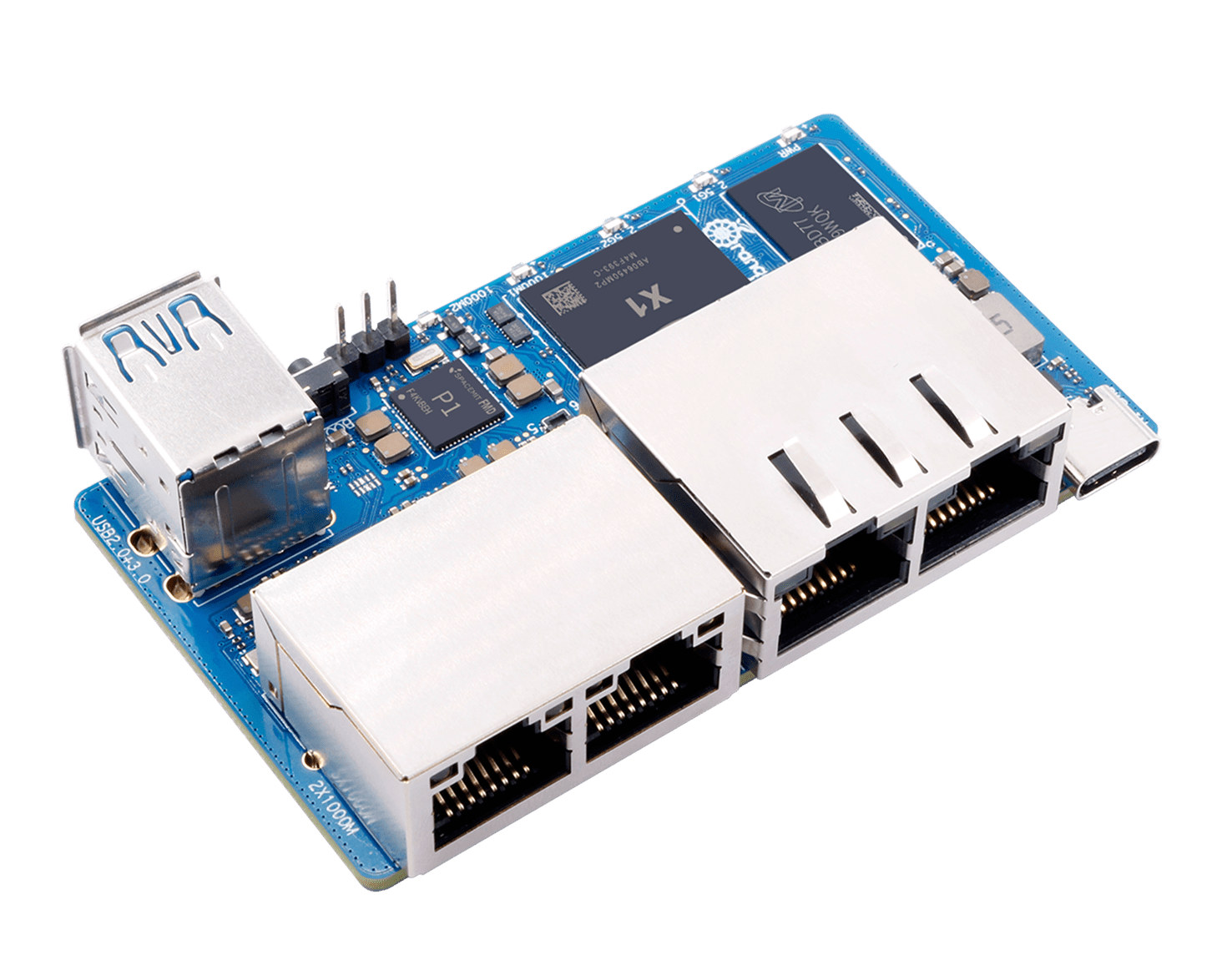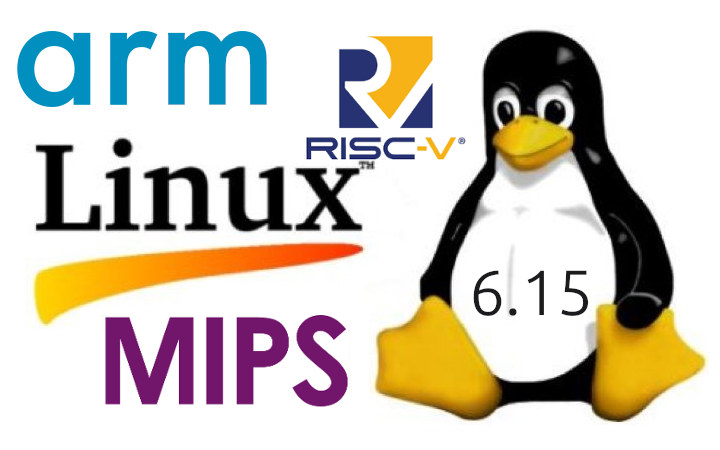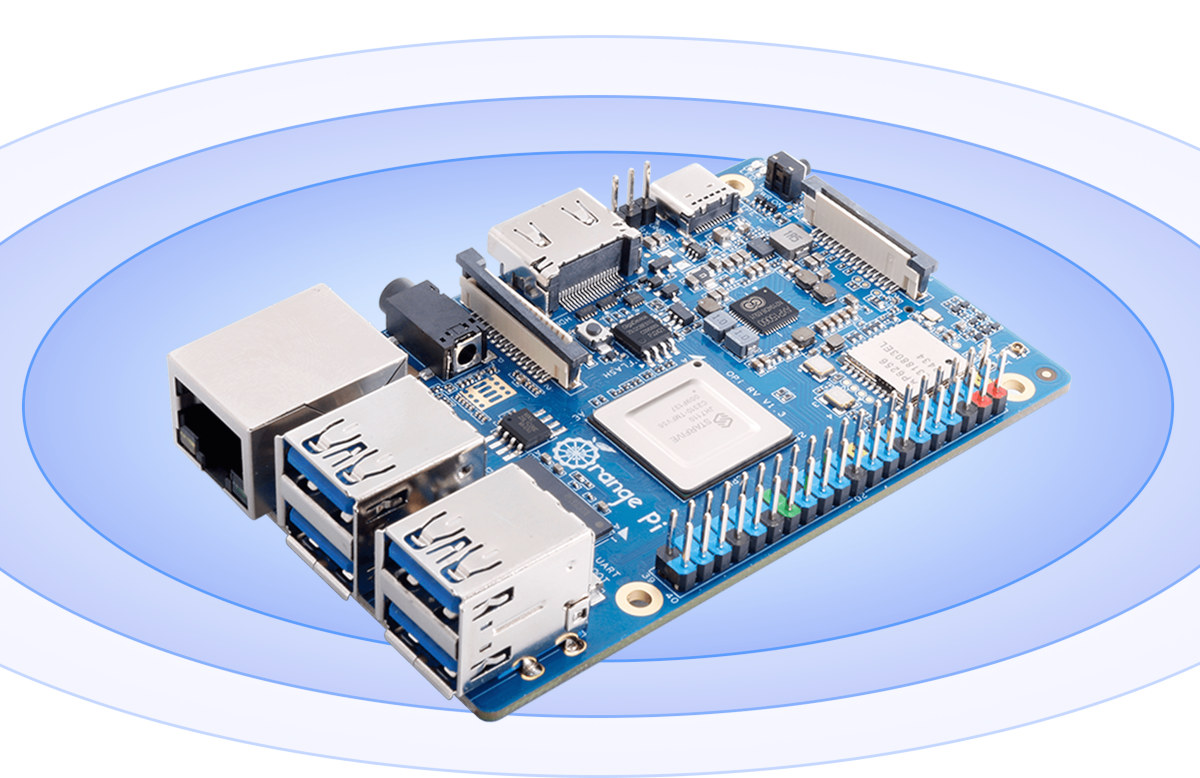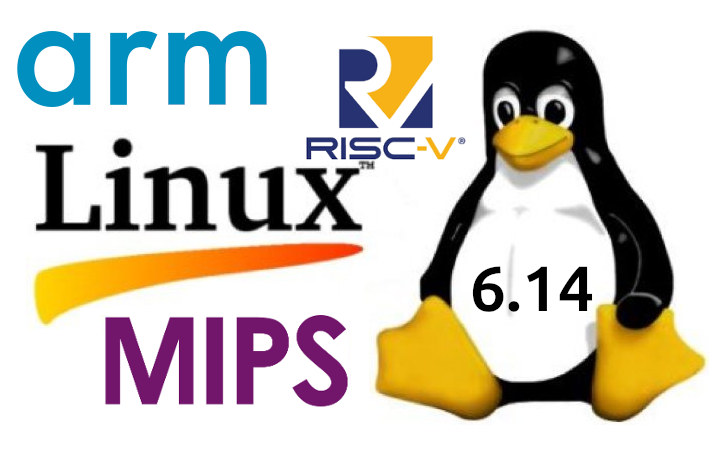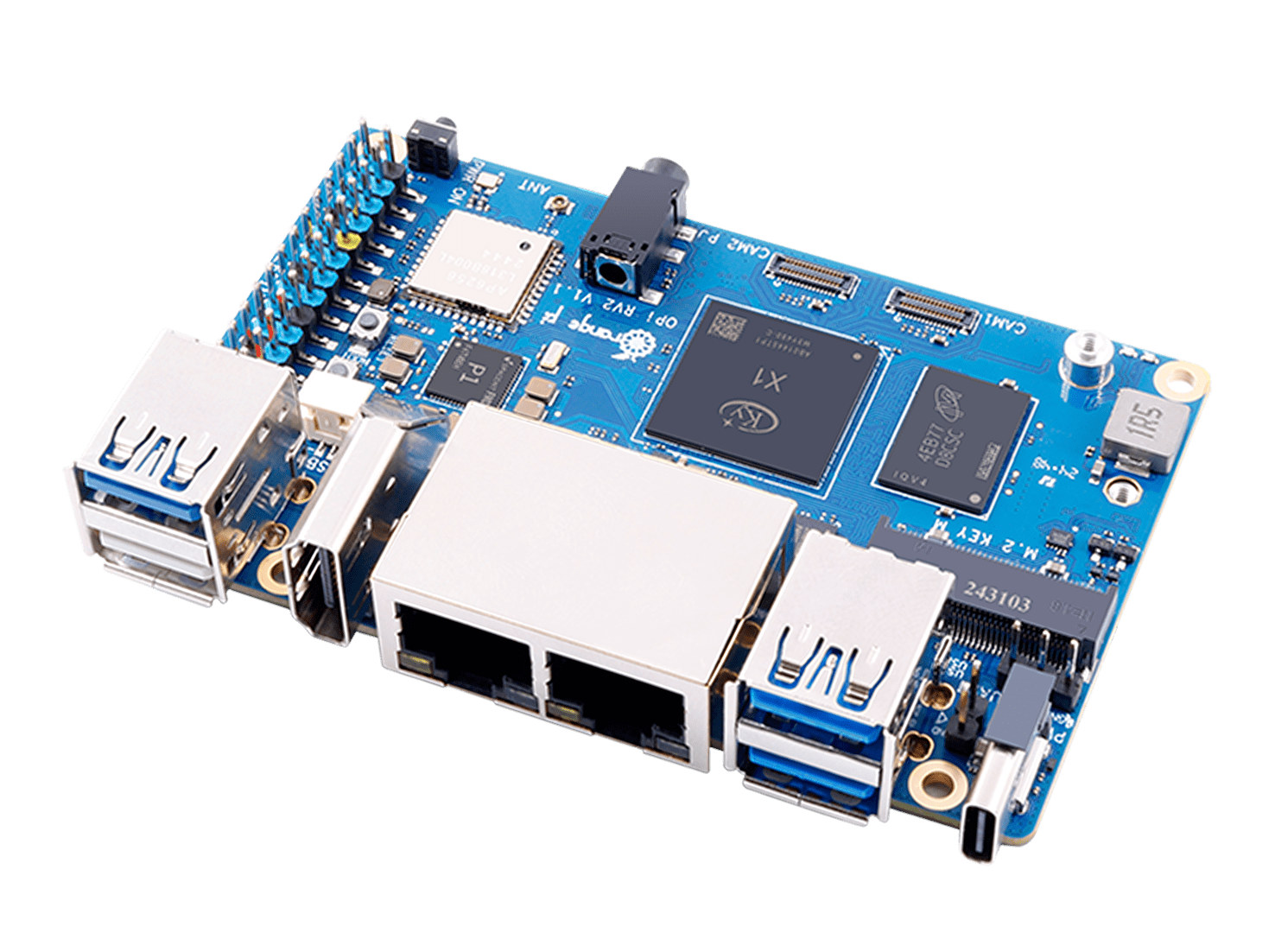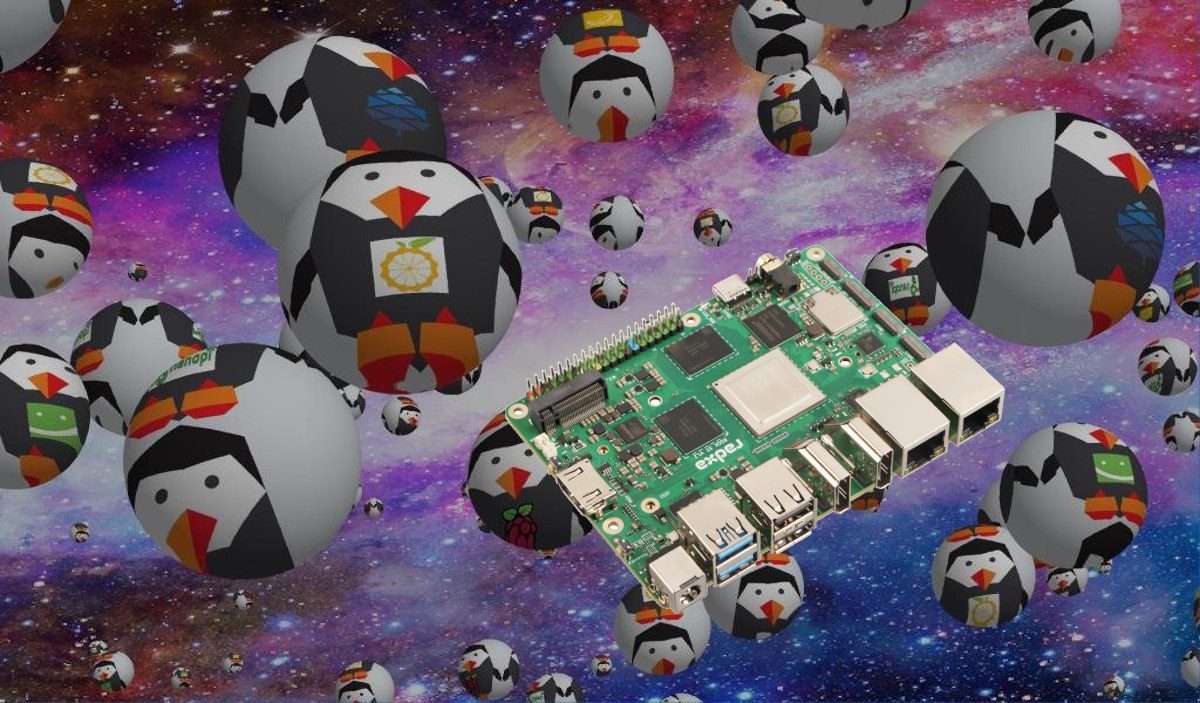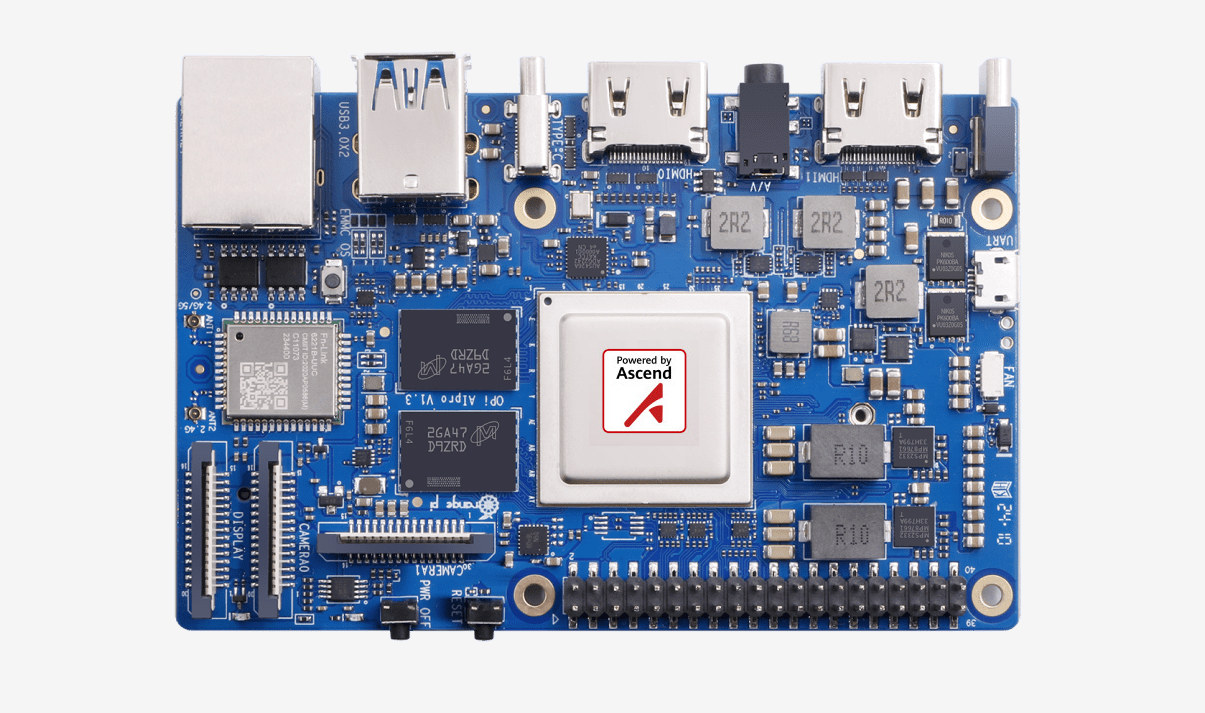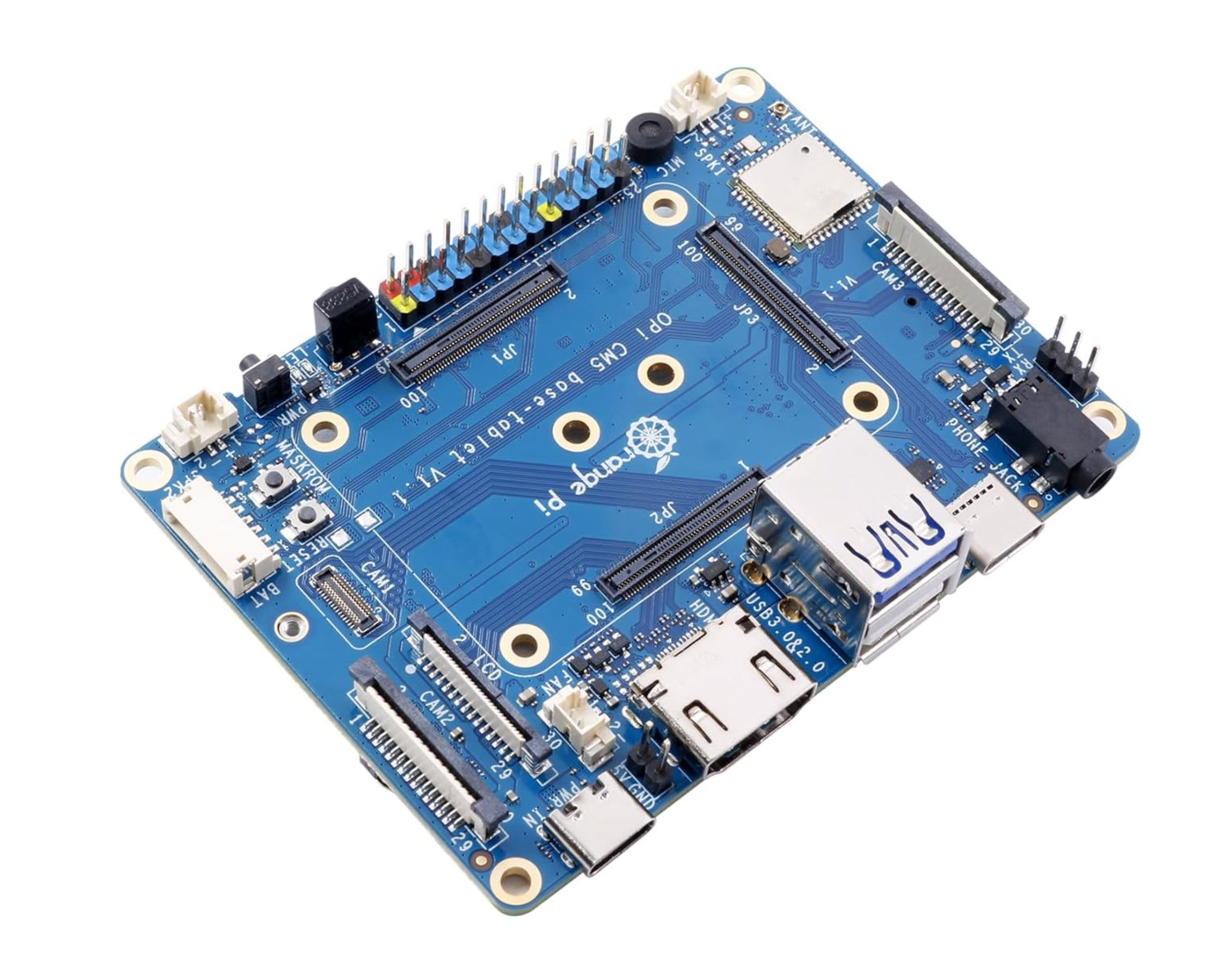Orange Pi has released two RISC-V boards so far: the Orange Pi RV with a StarFive JH7110 quad-core SoC, and the Orange Pi RV2 with a Ky X1 octa-core processor, either a clone of the SpacemIT K1/M1 SoC or one with different CPU markings. The third RISC-V board from the company, named Orange Pi R2S, also features a Ky X1 RISC-V SoC, but is designed for headless and networking applications with two 2.5GbE ports, two GbE ports, and two USB 3.0/2.0 ports, and not much else. Orange Pi R2S specifications: SoC – Ky X1 CPU – 8-core X60 RISC-V (RV64GCVB) processor @ 1.6 GHz GPU – Imagination IMG BXE-2-32 @ 819 MHz with support for OpenGL ES3.2, Vulkan 1.3, OpenCL 3.0; 20 GFLOPS VPU H.265, H.264, VP8, VP9, MPEG4, MPEG2 decoder up to 4K @ 60fps H.265, H.264, VP8, VP9 encoder up to 4K @ 30fps Support simultaneous processing 1080p60 […]
Linux 6.15 Release – Main changes, Arm, RISC-V and MIPS architectures
Linus Torvalds has just announced the release of Linux 6.15: So this was delayed by a couple of hours because of a last-minute bug report resulting in one new feature being disabled at the eleventh hour, but 6.15 is out there now. Apart from that final scramble, things looked pretty normal last week. Various random small fixes all over, with drivers as usual accounting for most of it. But we’ve got some bcachefs fixes, some core networking, and some mm fixes in there too. Nothing looks particularly scary. And this obviously means that the merge window opens tomorrow as usual, and I see the usual people being proactive and having sent me their pull requests. It’s memorial day tomorrow here in the US, but like the USPS, “neither snow nor rain nor heat nor gloom of night” – nor memorial day – stops the merge window. [ Actually, thinking back […]
Orange Pi RV RISC-V SBC with StarFive JH7110 SoC launched for $30 and up
The Orange Pi RV SBC powered by a StarFive JH7110 RISC-V SoC was first introduced at the Orange Pi Development Conference 2024, a little over one year ago. But somehow, the company first launched the Orange Pi RV2 SBC based on Ky X1 SoC (rebranded Spacemit K1) earlier this month, and has only started taking orders for the Orange Pi RV board. The credit card-sized SBC ships with 2GB to 8GB RAM, supports M.2 NVMe SSD storage, provides gigabit Ethernet, built-in WiFi 5 and Bluetooth 5.0, four USB 3.0 ports, HDMI and MIPI DSI video interface, a MIPI CSI camera interface, a 40-pin GPIO header, and more. Orange Pi RV specifications: SoC – StarFive JH7110 CPU – Quad-core RISC-V processor (RV64GC) at 1.5 GHz GPU – Imagination BXE-4-32 GPU with support for OpenCL 1.2, OpenGL ES 3.2, Vulkan 1.2 VPU H.264 & H.265 4Kp60 decoding H.265 1080p30 encoding JPEG encoder / […]
Linux 6.14 release – Main changes, Arm, RISC-V, and MIPS architecture
Linus Torvalds has just announced the release of Linux 6.14 on LKML: So it’s early Monday morning (well – early for me, I’m not really a morning person), and I’d love to have some good excuse for why I didn’t do the 6.14 release yesterday on my regular Sunday afternoon release schedule. I’d like to say that some important last-minute thing came up and delayed things. But no. It’s just pure incompetence. Because absolutely nothing last-minute happened yesterday, and I was just clearing up some unrelated things in order to be ready for the merge window. And in the process just entirely forgot to actually ever cut the release. D’oh. So yes, a little delayed for no good reason at all, and obviously that means that the merge window has opened. No rest for the wicked (or the incompetent). Below is the shortlog for the last week. It’s nice and […]
Orange Pi RV2 – A $30+ RISC-V SBC powered by Ky X1 octa-core SoC with a 2 TOPS AI accelerator
While the Orange Pi RV RISC-V SBC introduced at the Orange Pi Developer Conference 2024 last year is yet to be launched (should be up in a few days), the company has just launched the Orange Pi RV2 powered by the Ky X1 octa-core RISC-V SoC with a 2 TOPS AI accelerator, up to 8GB LPDD4X, optional eMMC flash moduyle, two M.2 sockets for storeage, dual gigabit Ethernet, WiFi 5, and more. While RISC-V has made a lot of progress over the years, Linux RISC-V SBCs were often synonymous with relatively expensive hardware for developers, since software is often unsuitable for production, at least for applications using graphics. The Orange Pi RV2 addresses the cost issue since the octa-core RISC-V SBC sells for just $30 to $49.90 depending on the configuration. Orange Pi RV2 specifications: SoC – Ky X1 CPU – 8-core 64-bit RISC-V processor GPU – Not mentioned VPU […]
Armbian v25.2 and DietPi v9.11 released with updated Ubuntu and Debian-based Linux images for single board computers
Vendor-provided Linux images for single board computers are not always working optimally, so this post is a regular reminder that users may want to check out Armbian and DietPi projects mostly supported by the community but also backed by some of the vendors who offload some (repackaging) software work to them. Armbian and DietPi are separate projects, but this month, Armbian v25.2 and DietPi v9.11 were almost released simultaneously. I don’t report on each release (should I?), but they release an update every few months. The last time we had a look at both projects was in September 2024 for the releases of DietPi 9.7 and Armbian 24.8. Let’s see what the new releases have to bring. Armbian v25.2 Main changes: New Boards – Rock 2A and 2F, NanoPi R3S, Retroid Pocket RP5, RPMini, Rock 5T, GenBook, MKS-PI, SKIPR, Armsom CM5, NextThing C.H.I.P, Magicsee C400 Plus Rockchip 3588 Improvements – […]
Orange Pi AIPro (8T) SBC features a 8 TOPS Huawei Ascend AI SoC, runs Ubuntu or openEuler
Orange Pi AIPro (8T) is a new single board computer for AI applications that features an unnamed Huawei Ascend AI quad-core 64-bit processor delivering up to 8 TOPS (INT8) of AI inference performance, although there’s also a 20 TOPS (INT8) variant of the SoC. The SBC comes with up to 16GB LPDDR4X and a 32MB SPI flash but also supports other storage options such as a microSD card, an eMMC flash module, and/or an M.2 NVMe or SATA SSD. The board also features two HDMI 2.0 ports, one MIPI DSI connector, a 3.5mm audio jack, two MIPI CSI camera interfaces, Gigabit Ethernet and WiFi 5 connectivity, a few USB ports, and a 40-pin GPIO header for expansion. Orange Pi AIPro specifications: SoC – Huawei Ascend quad-core 64-bit processor delivering up to 8 TOPS (INT8) AI performance and equipped with an unnamed 3D GPU; Likely Ascend 310B with Arm Cortex-A76 equivalent […]
Orange Pi CM5 “Tablet” Base Board drops Ethernet for WiFi 5, adds battery support, M.2 socket, 26-pin GPIO header…
The Orange Pi CM5 was launched as an alternative to Raspberry Pi CM4/CM5 last July with a Rockchip RK3588S octa-core Cortex-A76/A55 SoC, up to 16GB LPDDR4x, 256GB eMMC flash, and three board-to-board connectors maintaining partially compatibility with the Raspberry Pi Compute Module 4. At the time, Orange Pi also introduced the Orange Pi CM5 Base Board with HDMI 2.1, one Gigabit Ethernet port, two 2.5GbE ports, USB 3.0/2.0 ports, four camera connectors, and more. The company has now launched the Orange Pi CM5 “Tablet” Base Board without Ethernet ports, making use of WiFi 5 and Bluetooth 5.0 for networking instead. It keeps many of the same features but adds a 26-pin GPIO header, an M.2 Key-M socket for SSD storage, DP 1.4 and MIPI DSI display interfaces, and various audio interfaces. However, it does with “only” three camera interfaces. It’s quite thick to be used in a typical tablet, but […]


